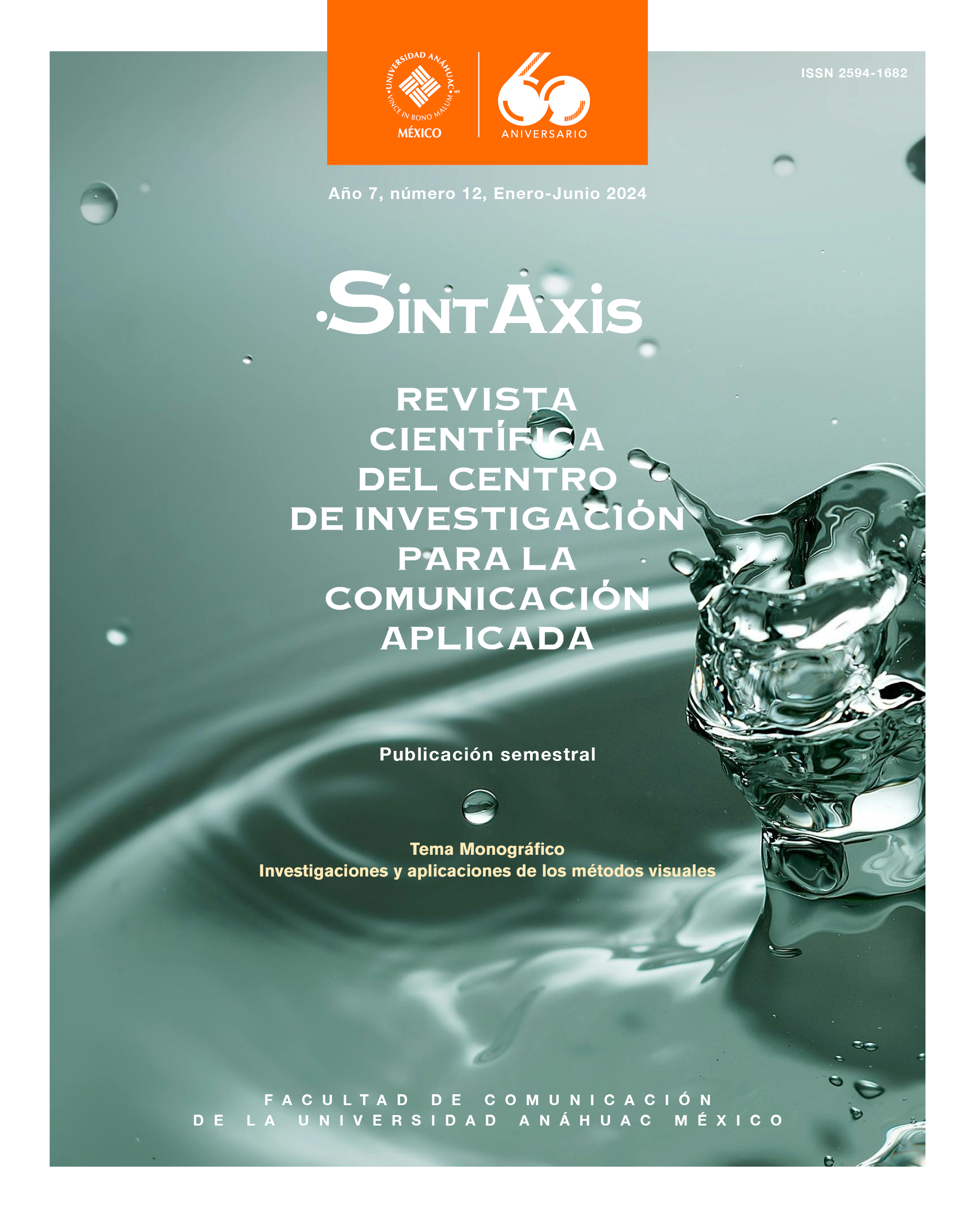Narrativas pandémicas contemporáneas y COVID-19: la puesta en escena como estrategia y método visual en la prensa
Contenu principal de l'article
Résumé
El objetivo de la presente investigación consiste en identificar si aquello que vemos en los medios noticiosos sobre la pandemia de COVID-19 es, efectivamente, resultado de la elección de las propiedades de la puesta en escena y de la denominada interfaz de Scolari. En éste se estudia si la prensa siguió una estrategia audiovisual (o método) para llevar los espectadores identificar en su cotidianidad pandémica, estructuras similares a las de relatos ficticios cinematográficos o televisivos, recurriendo a lo que Eco define como enciclopedia, en la medida en que la cultura organiza el campo semántico para identificar definiciones, a partir de unidades culturales comunes. Asimismo, se observan las estructuras narrativas como sintaxis espaciales, desde la perspectiva de M. de Certeau, a través de una metodología de análisis de contenido visual comparativo.
Téléchargements
PLUMX Metrics
Details de l'article

Ce travail est disponible sous licence Creative Commons Attribution - Pas d'Utilisation Commerciale - Pas de Modification 4.0 International.
Sintaxis. Revista científica del Centro de Investigación para la Comunicación Aplicada© se distribuye bajo una Licencia Creative Commons Atribución-NoComercial-SinDerivadas 4.0 Internacional.
El autor conserva los derechos patrimoniales sin restricciones y garantiza a la revista el derecho de ser la primera publicación del trabajo. El autor es libre de publicar en cualquier otro medio su artículo, como un repositorio institucional.
Références
Abidi, A. (25 de abril de 2021). Colapso hospitalario en la India ante el avance de la segunda ola. El País. https://goo.su/ZTEWc5
Barral, B. (31 marzo de 2020). Las restricciones al comercio por el coronavirus no deben afectar nuestros alimentos. United Nations News. https://goo.su/pehAjqK
BBC (30 de marzo de 2020). Coronavirus en Reino Unido: cómo Londres logró tener cero muertes por Covid-19 durante un día. https://goo.su/xCzffF
BBC News Mundo (10 de abril de 2020). Coronavirus en EEUU: los entierros en una fosa común de Nueva York, la ciudad que tiene más casos de Covid-19 que cualquier país del mundo. BBC. https://goo.su/AauUZb
Bellour, R. (2008). The Analisys of Film.
Certeau, M. (2007). La invención de lo cotidiano. Universidad Iberoamericana.
Eco, U. (2000). Tratado de semiótica general. Lumen.
Guiomar, A. y Rosillo (2020). Un mundo de calles vacías: la crisis del coronavirus. El País. https://goo.su/pNoJN
Konigsberg, I. (2004). Diccionario Técnico Akal de Cine. Akal.
Lipovetsky, G. (1986). La era del vacío. Ensayos sobre el individualismo contemporáneo. Barcelona, España: Anagrama.
Pellicer, M. (2020). Hay que equilibrar la mirada crítica contra las plataformas digitales. En Miquel Pellicer. [Entrevista a Carlos Scolari]. https://goo.su/ztUuz
Ramírez, S. (16 de marzo, 2020). La película de nuestras vidas. El país. https://goo.su/FHTUx3
Rueda, J. P. (9 diciembre de 2020). La semiótica de una pandemia. Gilles Lipovetsky [entrevista a Lipovetsky]. El tiempo. https://goo.su/6BP045W
Scolari, C. (6 de febrero de 2020). Guerra Mundial V. Perfil. https://goo.su/HoSJw
Scolari, C. (15 de marzo 2020). Coronavirus, epidemias e interfaces. Hipermediaciones. https://goo.su/tWmaJP
Scolari, C. (17 de marzo de 2020). Coronavirus: el 11S de la Generación Z. Perfil. https://goo. su/WDm2
Scolari, C. (1 de mayo de 2021). Una conversación transferencial sobre Vidas mediáticas. Hipermediaciones. https://goo.su/c5tPkN
Scolari, C. (18 de noviembre 2020). Metáforas, narrativas y nuevas especies mediáticas durante la pandemia. [Entrevista]. Hipermediaciones. https://goo.su/fg6oNEu
Scolari, C. (8 de agosto de 2020). Nuevas interfaces para un mundo pospandemia. Hipermediaciones. https://goo.su/IxXaIzK
Scolari, C. (2020). Educación transmedia, TIC y pandemia. Fundación Lúmninis. [Entrevista]. https://goo.su/UjORwIj
Scolari, C. (14 de febrero de 2021). ¿Una nueva edad de oro de la comunicación oral? Podcasts, audiolibros y otras especies sonoras. Hipermediaciones. https://goo.su/URfjA
Scolari, C. (2020). Hay pocos países tan mediatizados como Argentina. En La marca editora. [Entrevista de J. Fontevecchia]. https://goo.su/1DRn1H

